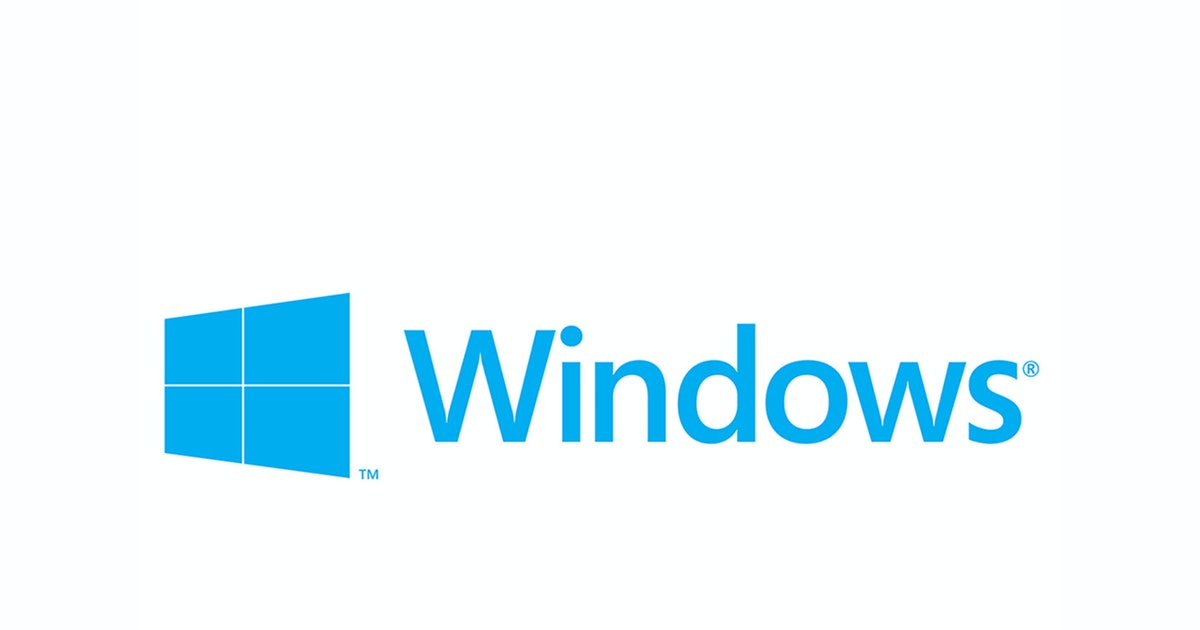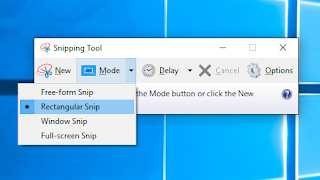There’s no reason to search for information on how to record an image on your computer since you’re in the right place. Here is a thorough guideline which provides an outline of the most frequently utilized screen-capturing software and the methods they can be used to take screen-shots.
The tools are available on your PC based on the operating system that your computer is running. Without further ad, it’s time to learn more about these tools and how they can be utilized to record the contents of the display on your computer.
There are a myriad of plausible reasons for why you should make a screen-shot. It is crucial for users of computers to be aware of how to capture screenshots as they play a significant role in their daily interactions using the Personal Computers.
Screengrabs are a great way to share with other people the content of your screen display or to serve as for a reference point. Screenshots can be captured by or by pressing a few buttons or by making use of an assortment of keyboard shortcuts.
How take a screenshot on your pc
A screenshot is essentially an image that displays the content of the screen your computer is showing. The majority of companies that create computer operating systems include capabilities in the system or software that are integrated into operating systems to assist in the process of taking screenshots.
Making a screenshot of your screen isn’t rocket science. Screenshots may be termed screengrab, screen capture or even screen capture. Screenshots have been proven highly reliable, as they are employed by businesses to offer remote assistance to users of computers. A majority of these companies require a photo of what’s shown on your screen so they are capable of diagnosing the issue.
Take a screenshot on Windows PC
To take a screenshot of your Windows PC isn’t all that complicated, simply look to your computer keyboard. take note of the key that says ‘ PrtScn‘or ‘ PrtSc‘ or ‘ Print Screen’ or something similar to this.
To capture all of the screen, including everything displayed on your screen. It could include all windows open, simply click the PrtScn button. Sometimes, you may want to limit the screen capture to just cover the window that is currently active.
If yes, use the combination of “Alt” and “PrtScn‘ (‘Alt+PrtScn’) keys on your keyboard. It’s also important to know that certain computer brands might require that you use the “Fn” key simultaneously while pressing other keys.
A few users may wish to pick only the portion they wish to share. If you wish to share just a small portion or screen you can hit the Windows+Shift+S keys. Be aware that this combination allows you to use the snipping tool if you’re running Windows 10 as the Windows 10 operating system in your PC.
Alternately, you may choose to utilize tools for editing your image. You can also choose to take the only part of the image you want to edit like using the Microsoft Paint program. To utilize this program, just open the program, select the ‘File’ button and then select the option to open to choose the image you wish to edit. Then, proceed by changing the size and saving your image.
Use snipping tool
Windows 7,8.1 and 10 operating systems are created with this program. The tool for snipping is a effective tool for providing the screengrab. The tool helps in making clear the area that users of computers may wish to record.
It is able to take a picture of the screen in its entirety, just a specific window, or even randomly selected areas, which means it can be a fantastic option for those who don’t require high powered screen capture tools.
It can be utilized to highlight and write on the pieces that have been grabbed. If you compare this tool against a similar tool, such as Microsoft Paint, you will realize that it will save users of computers a significant amount of time due to its flexibility. It is able to directly save an image without the need to open a different application to copy the image onto the clipboard.
To make use of the snipping tool simply select “Start” and then type’snipping tool into the search bar and choose one of the search results. Then, proceed by clicking “Mode” and selecting the type or screen recording that meets your requirements. Use a mouse to select the screen or the part that is required for you.
The Snipping tool can be an amazing tool for capturing the menu options like the dropdown menu which usually disappears after you release the mouse or even when you launch the menu. To take a menu picture, just hit the “Ctrl+PrtScn’ keys on your keyboard. If you’re using Windows 7 operating system, hit the “Esc” key prior to moving in entering the menu you would like to record.
After you’ve taken the photo You can decide you want to keep it in the preferred location or print it by copying and pasting in another program, or send it via email.
Take a screenshot on Mac OS X
It is worth noting that Mac OS X comes with the ability to take screenshots. A combination of keyboard shortcuts or keys can be used to take the screenshot. After pressing the combination to take a screenshot it will be supported by an audio click and the thumbnail of the screenshot will appear on the lower right side on your display.
To grab the entire screen, press simultaneously these keys: “Cmd+Shift+3”. For a screenshot which only requires a certain area you can hit the Cmd+Shift+4keys. The cursor in the screen will transform into a crosshair that you can then adjust to the amount of space you need.
If you need to access an individual or specific window such as a dock or menu bar, press simultaneously the ‘Cmd+Shift+4’keys and, without delay, hit your spacebar key. It will be apparent that the crosshair turns into a tiny camera, and will highlight the window or object you wish to grasp. You can also access the items in the Touch Bar by simply pressing the “Cmd+Shift+6” keys of your keyboard.
Screen grabs or captures are saved automatically in an image format PNG file that you can download to your desktop. If you wish for them to be saved on a clipboard, just click and hold the ‘Control’ button while you’re capturing.
Use Screenshot tool in MAC OS X
The Mac OS X (Mojave and later) operating system comes with an embedded screenshotting tool that is known as ‘Obviously-Screenshot’. It is accessed by pressing certain key combinations, i.e. ‘Cmd+Shift+5‘.
It can also be found within your computer’s ‘ Applications‘ under your ‘ Utility Section. When you start the application it displays a floating toolbar on the bottom of the screen. It gives options similar to the Snipping tool. It opens in windows. Here you can select the items you want to be recorded, either an individual selection, a specific window, or even the entire screen.
It also offers the possibility of recording events on your screen all or just a certain region. It also has a fiveor 10-second timer delay. The default screen grabs will be saved to the Desktop of your PC However, if you want to save screengrabs, you are able to choose to save them to your preferred location within the Options menu.
Other Screen Capture Tools
There are other Screen capture tools like The Fast Stone Capture tool, Jing SnagIt, and skitch which are more sophisticated than the built-in tools.
i)Fast Stone capture (Windows, $20)
Like the name implies it’s a quick application that is light. It’s extremely quick and offers an incredibly small user interface. It may be small in appearance but its capabilities are a step above the rest.
This tool is able to take screengrabs of various windows, parts and multi-level menus. There are a variety of choices to send screenshots, including automatically sending the screenshots via an FTP server once you have choose to, or forwarding them by mail, or by clipping the images in other programs for windows, such as Word or PowerPoint tool for presentations.
It is a versatile tool that comes with a required and adequate screen casting tool that can be used to capture signal inputs from audio. The tool can be configured to take as many screen shots as is possible using its preset options. It also has an inbuilt color picker which makes it much easier to manage color.
FastStone Capture interface.
There are several ways which you can use to take a screenshot in the Fast stone capture interface.
-
- Once you have opened the program, ensure the window you’re trying to capture is active. click the “Capture The Window That’s Active’ icon. Window’ icon which is the first icon to the left, to capture the active window on your computer screen You can also make use of key shortcuts on your keyboard to activate this procedure (Shift and print screen).
- After the application is launched and you are ready to capture the object, select the “Capture An Object’ icon, the second icon to left, and then select the object you would like to take. You can also use keystrokes on your keyboard to initiate this procedure (Alt + Print Screen).
- Start the Fast Stone tool and click on the ‘Capture a Rectangular Region’ icon, the third icon on the left. Alternately, you can utilize keyboard shortcuts to trigger the same process (Ctrl + Print Screen). Utilize the crosshairs across the monitor to put your mouse in the edge of the rectangular area you wish to capture. Drop your mouse and left-click to mark the area you want to select.
- Start your Fast Stone tool, and then click the “Capture A Freehand region’ icon on the fourth icon to the left. Alternately, you can utilize keys shortcuts for the exact operation (Ctrl and Shift, then Print Screen). The pointer will show an laso tool. To select your desired area or area, click the lasso on as many times as you want. The first click must be followed by the final click, so that if you succeed the circle will appear.
- When you have opened the application after you have opened it, click the “Capture The Full Screen’ icon on the fifth icon to the left side, to record the entire screen of your computer, including all open windows. Alternately, you can make use of keystrokes on your keyboard to initiate this procedure (Print Screen).
- Once you’ve opened the program and then click on the ‘Capture A Scrolling Window’ icon which is the sixth icon to the left side, to capture a portion of the screen that is larger or higher content that isn’t able to fit on your screen. Alternately, you can make use of keys to initiate this operation (Ctrl Alt + Print Screen).
ii) Jing (Windows, Free)
The screenshotting software was developed by an software company called TechSmith. Its design is loaded with features that will meet the needs of a vast number of users of computers.
It lets you send screen shots quickly. After downloading this application and you’re required to sign up for an account on Screencast.com. The program can be customised or set to upload screen recordings to an account on YouTube or Flickr account.
Once you have established thescreencast.com account, it’s simple to experiment with the features available. It is quick for you to change from screen rubbing as well as screencasting URL sharing of your files hosted on the site.
It’s built using drawing and text tools, but the speed of sharing capabilities are the icing of the cake. In the free version, you can take advantage of the ability to capture adventures and videos, but if upgrade your version to Jing Pro version, it eliminates branding from your photos and videos.
It also adds additional features to will make your recording experience more enjoyable because it comes in the capability to record your screen shots in MPEG in along with Flash.
How to take a screenshot using the Jing Tool
- Once you’ve opened the application, begin by hovering over the jingle ball and then clicking on the node to capture.
- Set your mouse in the uppermost part of the area or the area you wish to capture on the computer screen. move on by pressing and pressing on the mouse’s left button and then drag the cursor upwards to the region you want for a screen.
- Capture the image by click on the “ Image’ option.
- After you have taken your photo After taking your screenshot, a window displaying the image and annotation tools will appear. You can choose to add annotations to your image or skip to the next step.
- Save the image to the destination you prefer either on your personal desktop (by pressing the Floppy disk icon) or screencast.com (Screencast.com icon).
- If you choose the platform online You can click”View” in Screencast.com.
- It is also possible to share your content; you can click on the SHARE icon to obtain the link, then click”COPY” to copy the URL, or embed the code in the image.
iii) Skitch (Mac, Free)
This is a different screen-capturing tool, which is very identical to Jing. The application works in with Skitch.com which is believed to be a screen-capture hosting website.
The skitch tool takes the screen display on your screen annotations it using its text and draw tools and then draws the image in an attractive graphic after which, when you’ve finished it, you are able to share it on the web and in your personal desktop.
If you do not want to create an account on Skitch.com You can utilize an existing Mac, Flickr, or FTP account. Skitch’s interface is easy to use; most features are accessible in the same place which means you don’t have to spend time in searching for an application when searching for one.
How take a screenshot using the Jing Tool
- Install the Skitch program, open, and click the ‘Skitch’ tab.
- Proceed by clicking the left mouse button on the new option to populate the screen capture type options.
- Take the screenshot by clicking on the screen capture type option that suits your needs. The ‘Screen Snap’ option uses a screenshot of a selected region’s portion on the computer screen. The ‘Full screen’ option captures your entire screen’s contents while the ‘Blank’ option uses to create a file, which is an entirely white file, and the program allows you to annotate and draw all over the screen.
- You can annotate your files using the toolbar; The first tool is the ‘Arrow Tool’ enables you to draw arrowheads; the second tool is the ‘Text tool,’ which allows you to write canvas text.
- The third tool is the ’Shape tool,’ which avails you to draw nice looking shapes. The fourth tool is the ‘Pen Tool’; this tool helps you draw or highlight areas on the picture. The fifth tool is the Stamp Tool, which uses to create place marks. The sixth tool is the Pixelate Tool, which helps clean up unwanted text from your capture that you prefer shouldn’t be displayed.
- The seventh tool is the Crop and Resize tool, which helps eradicate or an unwanted region or reduce your capture size. The last tool is the ‘Color Tool,’ which helps in color management. You can choose the color you want with this tool.
- The last part is saving your image.
iv) Snagit (Windows, $50)
How to take a screenshot using the Snagit Tool
- After you install the Skitch program, launch the application.
- You confirm if the Print Screen sets as the Global capture hotkey under the red grabbing button before you make sure. You can also change the hotkey to Print Screen by clicking in that region followed by a simultaneous press on the Print Screen key.
- The next step is to click on the Image.
- Pick your desired, Effects, Selection, and share options or settings.
- After you have personalized the settings to suit your needs, press the Print Screen Key to screenshot.
v) Grab (Mac)
This tool can be an excellent alternative for Mac users since it can make precisely what the windows snipping tool can do. With its several screens capturing modes and keyboard shortcuts, it can capture screenshots and save them in your preferred location.
How to take screenshots using the Grab tool
You can access the grab tool by using the following ways;
- You can open your applications and find them in the utility section.
- You can also open Finder and type /Applications/Utilities/Grab.app.
- You can open Launchpad and proceed to the Other section, and land on Grab.
- Finally, you can also open Spotlight and key in the word Grab and open it from there.
There are several ways which you can use to take a screenshot in the Grab Tool.
After you open the application, click on the ‘Capture’ tab and click on ‘Selection’ to capture a specific area of your computer screen, or use the keyboard shortcuts to trigger the same action (Shift + Command + A).
- When the application has been launch, click on the ‘Capture’ tab and when the dropdown menu is displayed, click on ‘Window’ to capture the window that you want to grab. Alternatively, you can use the keyboard shortcuts to trigger the same action (Shift + Command + W).
- Open the grab tool and proceed to the ‘Capture’ tab, and when the dropdown menu is displayed, click on ‘Screen’ to capture the entire screen. Alternatively, you can use the keyboard shortcuts to trigger the same action (Command + Z).
- Open the grab tool and proceed to the ‘Capture’ tab and when the dropdown menu is displayed, click on ‘Timed Screen’ to start a 10-second timer, then proceed by selecting the area you want to grab. Alternatively, you can use the keyboard shortcuts to trigger the same action (Shift + Command + Z).
vi) Green shot
How to take screenshots using the Green Shot tool
There are several ways which you can use to take a screenshot in the Grab Tool.
-
- After you open the application, right-click on the system tray icon and select the type of screenshot you want to capture. If you want to capture an entire area or region, select the ‘Capture Full screen’ option, or you can use the keyboard shortcuts to trigger the same action (Ctrl + Print Screen).
- When the application has been launch, right-click on the system tray icon and select the type of screenshot you want to capture. If you want to capture a portion of an area or region, select the ‘Capture Region.’ Alternatively, you can use the keyboard shortcuts to trigger the same action (Print Screen).
- Open the GreenShot tool and proceed by right-clicking on the system tray icon and select the type of screenshot you want to capture. If you want to capture a window that you want to screenshot, select the ‘Capture Window’ option, or use the keyboard shortcuts to trigger the same action (Alt + Print Screen).
- Open the GreenShot tool and proceed by right-clicking on the system tray icon and select the type of screenshot you want to capture. If you want to capture the last region, select the ‘Capture Last Region’ option, or use the keyboard shortcuts to trigger the same action (Shift + Print Screen).
vii) LightShot
How to take screenshots using the Light Shot tool
This tool doesn’t require a lot of steps in capturing your screen contents. You only need to install it on your computer and press the ‘Print Screen’ button on your keyboard.
Conclusion
A majority of operating systems include built-in screen capture tools, however there are third-party tools for screenshots available to capture regular screenshots. This tool is indispensable in many computer users routines.
For those who does regular screen captures it is recommended to have an appropriate tool to accomplish the task. This means that you need the right tool with an array of functions.
For instance for instance, Snagit is one example. Snagit tool is extremely advanced and can take pictures of images that aren’t able to display on a screen due to its size (scrolling screen shots).
Do you enjoy this kind of information regarding this screen? Are you able to comment on any issues that you have from the comments session? Thank you.







